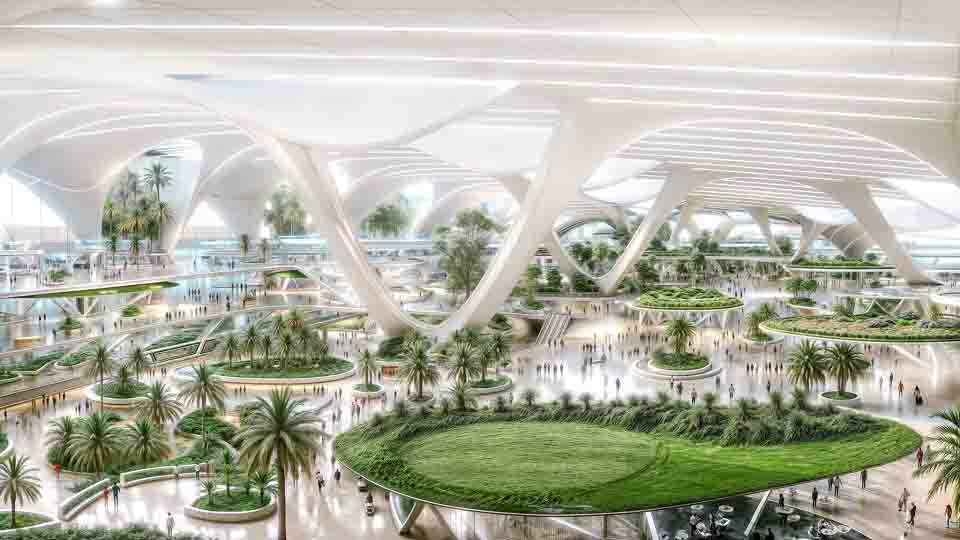Airport
A plane so cool, it’s frozen..!


Like the #MagicPlane featuring Sorcerer Mickey, the images on the #DisneyFrozenThemedPlane tell an enchanting story. The tail of the aircraft features Anna and Elsa celebrating sisterhood and the magic of snow. Moving along the aircraft from back to front, the magic travels to warmer climes where Olaf can be found enjoying a summer day on the beach. The theme carries through to the interior of the aircraft with images on the overhead bins, bulkheads, lavatory mirrors and headrests.
“This aircraft takes the relationship between WestJet and Disney to a completely new level of cool,” said Bob Cummings, WestJet Executive Vice-President, Commercial. “Two years ago, we launched the #MagicPlane, our first Disney-themed aircraft, and no matter where it flies throughout our network, it is the most-anticipated and most-photographed aircraft in WestJet history. Today, we are proud to team up with our great friends at Disney to create a sequel like no other.”
“To see our vision come to life is so exciting, as we collaborated on this project for over a year. Only a very small group of us (WestJetters and Disney Artists and Cast Members) knew and we had to keep our secret under wraps… or should I say, on ice,” said Marlie Morrison, Managing Director, The Walt Disney Company (Canada) Ltd., Parks & Resorts. “It’s a truly unique and unforgettable design that Disney Fans and WestJet guests alike will enjoy for years to come.”

- The aircraft was painted in Fort Worth, Texas.
- The paint team included team members from Canada, the United States and Germany. They watched Frozen to get them into the spirit before work began.
- The job took 21 days of 12-hour rotations involving a constant crew of six painters working 24/7.
- The crew used 643.5 litres of paint consisting of 23 colours — five for the umbrella alone.
- Sparkles were added to the paint in sections to add shimmer and shine as the aircraft moves.
- An airbrush artist was brought in to work on details around the sun, water and castle.
- The inside of the aircraft has decals and headrest covers that mimic the cold-to-warm (back-to-front) theme on the outside of the aircraft.
- There are 54 separate overhead bin doors on the aircraft and each has a unique Frozen decal.
- Several dozen bagels were consumed during the painting of this aircraft (there weren’t any doughnut stores nearby). The crew drank more than 100 litres of sweet tea
Painting the Disney Frozen themed plane
Liked it ?
Share with your friends and family

Airport
This airport maintains a 30-year record of no lost luggage

Step into world of seamless travel, where every journey begins and ends with peace of mind. For three decades, this airport has upheld a remarkable record: not a single piece of luggage lost.
In the fast-paced world of air travel, where delays and mishaps can cause frustration and inconvenience, Kansai Airport in Japan stands out as a beacon of efficiency and reliability.
Recently crowned the best airport for baggage handling in the prestigious 2024 Skytrax World Airport Awards, Kansai Airport has achieved a remarkable feat – maintaining a flawless record of zero lost luggage since its inauguration in 1994.
Kansai Airport’s baggage handling operations can be attributed to its meticulous and streamlined processes. Upon the arrival of a flight, luggage is swiftly sorted in the airport’s state-of-the-art sorting room. Each piece is then carefully placed on the conveyor belt in the precise order dictated by luggage tags.
Crucially, airport staff meticulously check each item to ensure nothing is left behind in the transport box. Remarkably, this entire process is completed within a mere 12 minutes of the plane touching down.
In addition to its remarkable efficiency, Kansai Airport prides itself on its commitment to innovation and continuous improvement. By leveraging cutting-edge technology and implementing best practices in baggage handling, the airport has consistently raised the bar for industry standards.
While Singapore Changi Airport and Bahrain International Airport secured second and third place, respectively, demonstrating their own commitment to excellence in customer service. Taiwan Taoyuan International Airport, ranked eighth in the survey, further highlights the Asian region’s dominance in providing exceptional baggage handling services.
Airport
Dubai Initiates ‘World’s Largest’ Airport Terminal Project

Dubai, known for its audacious projects and visionary ambitions, has set its sights on yet another groundbreaking endeavor.
On a Sunday announcement, the Gulf emirate revealed the commencement of construction on a colossal new terminal at Al Maktoum International Airport. With an estimated cost soaring close to $35 billion, this undertaking signals Dubai’s unwavering commitment to spearheading innovation and redefining the global aviation landscape.
The visionary behind this monumental project, His Highness, proclaimed that this future hub will surpass all precedents, becoming “the world’s largest” airport. Envisioned to dwarf the current Dubai International Airport by fivefold, it will boast a staggering 400 aircraft gates and feature a constellation of five parallel runways.
But more than just sheer size, the new terminal will serve as a crucible for pioneering aviation technologies, heralding a new era of efficiency and connectivity in air transport. Dubai’s ambitions extend beyond mere infrastructure.
As His Highness elaborated, the airport will catalyze the emergence of an entire city, a bustling metropolis in Dubai South. Anticipated to accommodate housing for a million residents, this urban nexus will magnetize leading companies in logistics and air transport, cementing Dubai’s status as a global economic powerhouse.
The master plan for the Airport of the Future unfolds across an expansive canvas, spanning a sprawling area of 70 square kilometers. With an ultimate capacity surpassing 260 million passengers and 12 million tonnes of cargo per annum, it charts a trajectory for sustained growth and prosperity in Dubai’s aviation sector over the next four decades.
This visionary project is not just a testament to Dubai’s ambition; it is a cornerstone of its economic agenda. Integral to Dubai’s economic fabric, the new airport will fuel job creation and residential demand, with projections estimating requirements for over a million individuals living and working in Dubai South.
Aerospace
India is set to build a central command for the Air Traffic Control system, called ISHAN

India’s air traffic growth has led to increased responsibilities for air traffic control. The Airports Authority of India (AAI) is considering centralizing air traffic control for aircraft, dividing the country into four regions. The goal is to consolidate India’s segmented airspace into a single entity to improve air traffic management (ATM) efficiency, safety, and smoothness.
Recently, the AAI invited expressions of interest to develop a detailed project report for the Indian Single Sky Harmonized Air Traffic Management (ISHAN) initiative in Nagpur. Under this plan, air traffic controllers in Nagpur would handle domestic flights flying above 25,000 feet, eliminating the need for coordination among controllers in different regions.
For domestic regional flights operating above 25,000 feet, control would shift to the central command in Nagpur. This consolidation aims to enhance airline operations, increase flight handling capacity, and reduce congestion and flight times for passengers.
Currently, the AAI provides ATM services over Indian airspace and adjoining oceanic areas, covering over 2.8 million square nautical miles. This airspace is divided into four flight information regions (FIRs) in Delhi, Mumbai, Kolkata, and Chennai, along with a sub-FIR in Guwahati.
FIRs are responsible for providing air traffic services, including weather information, visibility, and search and rescue assistance. The proposed unification under the ISHAN initiative aligns with the projected growth of the aviation industry, which anticipates a doubling of domestic passenger traffic by 2030.






















